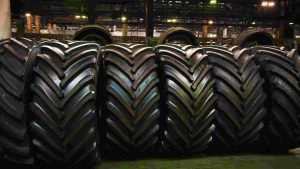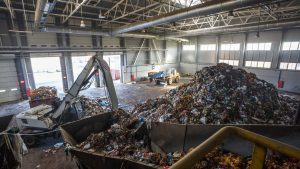![]()
Extended Producer Responsibility(EPR) is a critical environmental policy approach to shift the responsibility for managing waste from end-consumers and municipalities back to the producers. It requires producers to take responsibility for the complete lifecycle of their products, including disposal and recycling. In the context of tire waste, EPR initiatives vary across countries, and each has its unique approach and challenges. In this blog, we will compare India’s EPR approach to tire waste with EPR practices in other countries, drawing lessons and insights.
1. India’s EPR Approach for Tire Waste
India has been grappling with managing tire waste due to the rapid increase in vehicles on its roads. The Indian government has recognised the need for effective waste management and has implemented EPR policies to address this issue. The EPR approach for tire waste in India involves several key elements:
- Producers’ Responsibility: Producers in India must manage and recycle a certain percentage of the tires they manufacture. This responsibility is governed by the Central Pollution Control Board (CPCB) and is enforced through regulations such as the Plastic Waste Management Rules, 2016.
- Collection and Recycling Targets: Producers must collect and recycle a specific percentage of the end-of-life tires (ELTs) they generate. The rate varies depending on the volume of tires they produce, and failure to meet these targets can result in penalties.
- Eco-Friendly Practices: The Indian EPR framework encourages eco-friendly practices for recycling tire waste, such as using shredded tires in civil construction, playgrounds, and road surfacing.
- Awareness and Education: Producers must also educate consumers about proper tire disposal and recycling.
- Reverse Logistics: Many tire producers have established reverse logistics networks for collecting used tires from dealers and end-consumers, which are then sent to authorised recycling facilities.
- Challenges: Implementing EPR for tire waste in India faces various challenges, including inadequate infrastructure, lack of awareness among consumers, and difficulties in tracking and monitoring compliance.
2. EPR Practices in Other Countries
To draw lessons and insights from India’s EPR approach to tire waste, it is essential to compare it with practices in other countries:
2.1. United States
In the United States, tire EPR programs are administered at the state level. Many states have adopted EPR policies that require tire producers to establish and fund tire recycling programs. Producers are responsible for collecting and recycling a certain percentage of the tires they sell, and they pay a fee per tire into a state-managed fund. These funds are then used to support tire collection, recycling, and disposal programs.
Lessons and Insights for Tire Waste:
- The state-level approach allows flexibility in tailoring programs to the specific needs and challenges of each state.
- Effective funding mechanisms, such as producer fees, help ensure that tire waste management is financially sustainable.
2.2. European Union
The European Union (EU) has implemented comprehensive EPR directives for various waste streams, including tires. In the EU, tire producers must ensure that a certain percentage of the tires they place on the market are collected and recycled. This has led to the development of well-established tire recycling and retreading industries in many European countries.
Lessons and Insights for Tire Waste:
- A harmonised approach across multiple countries (as in the EU) can lead to more consistent and effective EPR practices.
- Collaboration among EU member states has allowed for the exchange of best practices and technological advancements.
2.3. Japan
Japan has a robust EPR system for tire waste. Producers are responsible for collecting and recycling a certain percentage of the tires they manufacture. They have established a network of collection centres and recycling facilities to manage tire waste. The Japanese government actively promotes using recycled tire materials in various applications, such as civil engineering projects.
Lessons and Insights for Tire Waste:
- Japan’s focus on promoting recycled tire materials in construction highlights the importance of finding sustainable end-uses for recycled tire products.
- Well-established collection networks help ensure efficient tire waste management.
2.4. Canada
Canada has a diverse range of EPR programs, including those for tires. Provinces like Ontario have established tire stewardship organisations responsible for tire collection, recycling, and education. Fees paid by tire producers fund these organisations.
Lessons and Insights for Tire Waste:
- A collaborative approach involving producer-funded stewardship organisations can effectively manage tire waste.
- Public education and awareness campaigns are crucial in encouraging proper disposal and recycling.
2.5. China
China has also implemented EPR policies for tire waste, with regulations requiring tire producers to establish recycling and collection systems. The Chinese government has set specific targets for tire recycling and reuse, and non-compliance can result in penalties.
Lessons and Insights for Tire Waste:
- Enforcing specific recycling and reuse targets can be an effective way to drive producer compliance.
- Government oversight and penalties for non-compliance can provide strong incentives for tire producers to meet their responsibilities.
2.6. South Africa
South Africa has introduced EPR regulations for tires, obligating producers to manage and recycle a certain percentage of the tires they place on the market. The Tire Recycling South Africa (TRSA) organisation is central in coordinating collection and recycling efforts.
Lessons and Insights for Tire Waste:
- Centralised organisations like TRSA can streamline tire waste management efforts, making it easier for producers to meet their obligations.
- Collaboration between government and industry can lead to more effective EPR implementation.
3. Lessons and Insights from EPR Practices Worldwide
- Collaboration with the Industry: Many successful EPR programs involve collaboration between government authorities and tire producers or industry organisations. This partnership can lead to better compliance, efficient collection and recycling networks, and innovative solutions for managing tire waste.
- Producer Fees and Funding Mechanisms: Several countries have implemented producer fees or taxes to fund tire recycling programs. This funding mechanism ensures that the financial burden of waste management is placed on the producers, encouraging them to invest in sustainable practices.
- Set Clear Targets and Penalties: Setting clear and achievable recycling and collection targets for producers, along with penalties for non-compliance, can be a powerful motivator for tire producers to fulfil their responsibilities.
- Promotion of Sustainable Uses: Encouraging the use of recycled tire materials in various applications, such as civil construction, road surfacing, and playgrounds, can create demand for recycled tires and support the development of a circular economy.
- Public Awareness and Education: Effective EPR programs often include public awareness and education campaigns to inform consumers about the importance of proper tire disposal and recycling. Educating the public can lead to increased cooperation in tire waste management.
- Tracking and Monitoring Compliance: Robust systems for tracking and monitoring compliance are essential to ensure producers meet their recycling targets. This requires data collection and reporting mechanisms.
Conclusion
EPR approaches for tire waste vary across countries, reflecting differences in regulatory frameworks, industry structures, and waste management infrastructure. India’s EPR approach, while promising, faces challenges related to infrastructure, consumer awareness, and monitoring compliance. By examining EPR practices in other countries, India can draw several valuable lessons and insights:
- Collaboration between government authorities and industry organisations is critical for successful EPR implementation. By working together, they can develop efficient collection and recycling networks.
- Funding mechanisms like producer fees or taxes can ensure the financial sustainability of tire recycling programs, reducing the burden on taxpayers and incentivising producers to invest in sustainable practices.
- Setting clear and achievable recycling targets, along with penalties for non-compliance, provides a strong motivation for producers to fulfil their EPR responsibilities.
- Promoting the use of recycled tire materials in various applications can create demand for recycled tires and support the development of a circular economy.
- Public awareness and education campaigns can increase cooperation and support among consumers for proper tire waste management.
- Effective tracking and compliance monitoring are crucial to ensure that producers meet their recycling targets.
By learning from the EPR practices of other countries, India can improve its EPR approach to tire waste and work towards a more sustainable and environmentally responsible tire waste management system.





